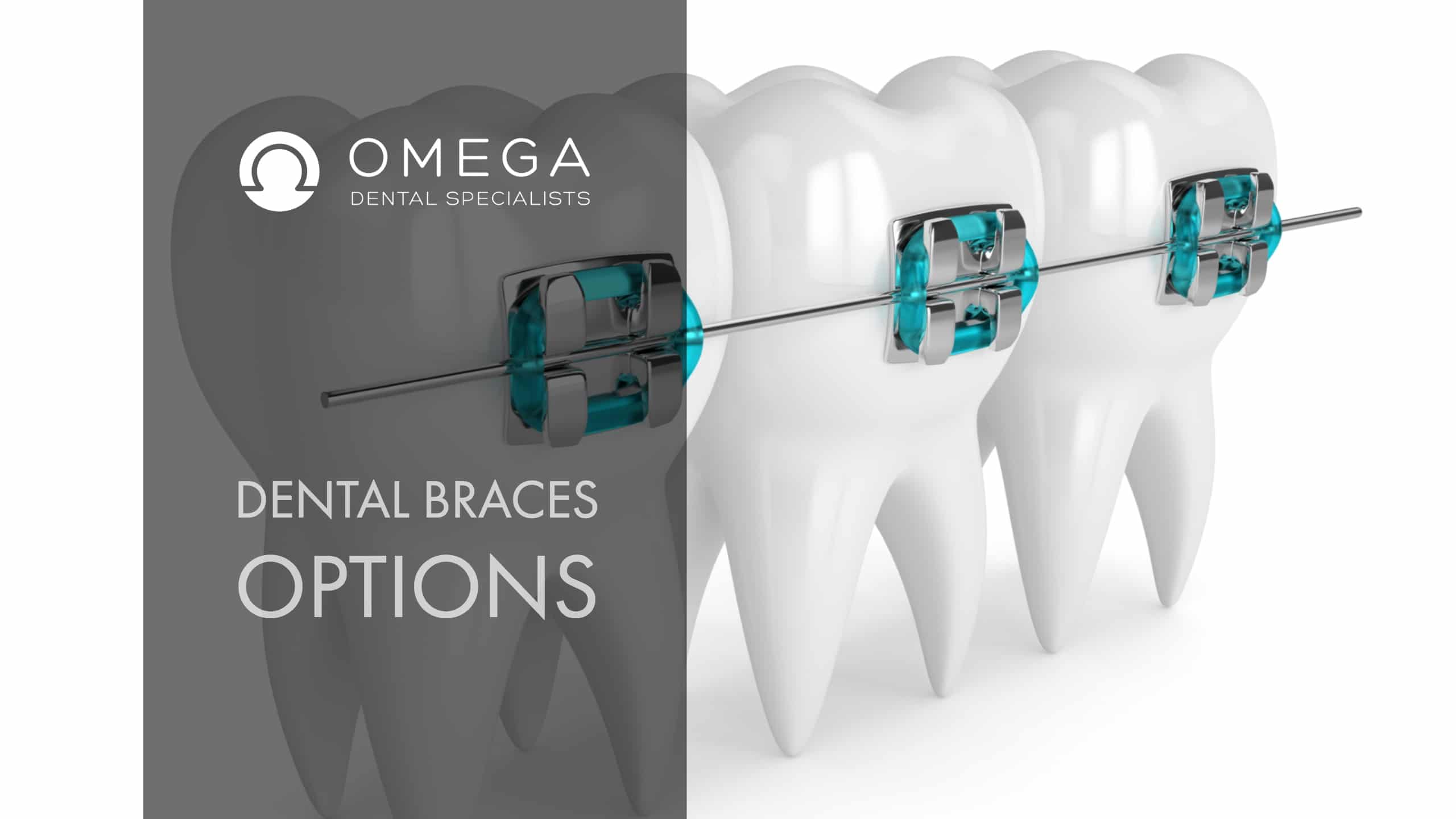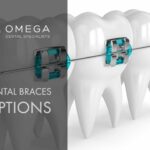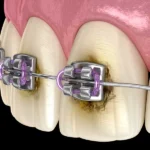What Are The Dental Braces Options?

What Are the Dental Braces Options? Your Guide for Houston Smiles
Orthodontic technology has advanced dramatically, giving patients in Houston more choices than ever for straightening teeth. Whether you want a discreet appearance, faster treatment times or a budget‑friendly option, there’s a braces solution tailored to your needs. In this comprehensive guide we explain how different types of braces work, weigh their pros and cons, highlight typical costs in Houston, and help you decide which treatment is right for your smile.
Understanding Braces: What Issues They Fix
Braces and clear aligners gradually move teeth into alignment by applying gentle, continuous pressure. They can correct crowded or crooked teeth, close gaps, fix overbites or underbites and improve overall bite function. Straighter teeth aren’t just about aesthetics; they’re easier to clean and can reduce the risk of tooth decay and gum disease. When choosing a braces option, consider the complexity of your case, how visible you want the appliance to be and your budget.
Traditional Metal Braces
Metal braces use stainless‑steel brackets attached to each tooth with an archwire connecting them. Your orthodontist periodically tightens the wire to guide teeth into position.
- Pros: Metal braces are durable and effective for all levels of orthodontic correction, including complex cases. They’re often the most affordable option, and modern brackets are smaller than they used to be. You can personalize your braces with colored elastic bands.
- Cons: Metal braces are the most noticeable type. The brackets and wires can irritate cheeks and gums, especially early in treatment, and they require careful brushing and flossing to keep food from getting trapped.
- Cost in Houston: Traditional metal braces generally range from $3,000 to $7,000 depending on treatment length and complexity.
Ceramic Braces
Ceramic braces work like metal braces but use tooth‑colored or clear brackets and often frosted wires that blend with your natural tooth shade. This makes them much less noticeable while delivering similar results.
- Pros: Ceramic braces are less visible than metal braces and many patients find them more comfortable because the materials are less abrasive. They provide effective treatment for most orthodontic problems and allow you to smile confidently during treatment.
- Cons: Ceramic brackets are more fragile and can break more easily than metal ones. They also tend to cost more and may stain if not cleaned properly. Some orthodontists avoid placing ceramic brackets on the lower teeth because the harder enamel on upper teeth could wear them down.
- Cost in Houston: Expect ceramic braces to range from about $4,000 to $6,500 in the Houston area.
Lingual Braces
Lingual braces are customized metal braces bonded to the back surfaces of your teeth, making them invisible from the front. They use the same mechanics as traditional braces but are hidden behind the teeth.
- Pros: Lingual braces are completely concealed, offering a truly invisible solution. They can treat most orthodontic conditions and are ideal for patients who want to keep their treatment secret.
- Cons: Lingual braces are typically the most expensive option and can be difficult to clean. Some wearers experience temporary speech changes, like a mild lisp, while their tongue adapts. Adjustments may take longer, and not every orthodontist offers this specialized technique.
- Cost in Houston: Lingual braces generally cost between $8,000 and $13,000.
Self‑Ligating Braces
Self‑ligating braces, such as the Damon system, use special clips or sliding doors to hold the archwire instead of elastic bands. This design reduces friction and can allow teeth to move more freely.
- Pros: Patients often experience shorter appointment times and fewer office visits because the braces adjust themselves to some extent. Some people find them more comfortable and easier to keep clean because there are no elastic ties to trap food.
- Cons: Self‑ligating braces are similar in appearance to metal or ceramic braces, so they’re still visible. Some brands may cost slightly more than traditional braces, though others are comparable.
- Cost in Houston: Self‑ligating braces at Houston practices typically start around $4,000 and are comparable to metal braces.
Clear Aligners (Invisalign and Similar Systems)
Clear aligners are removable, transparent plastic trays that fit snugly over your teeth. You receive a series of trays that gradually shift your teeth into place.
- Pros: Aligners are nearly invisible and can be removed for eating, brushing and flossing. There are no wires or brackets to irritate your mouth, and you can continue eating your favorite foods without worrying about damaging your braces.
- Cons: Success depends on wearing the aligners for 20–22 hours per day; forgetting to wear them can delay results. Aligners must be removed before eating or drinking anything other than water. They may not be suitable for very complex orthodontic cases, and lost trays can add costs.
- Cost in Houston: Clear aligner treatment generally costs between $3,500 and $6,000, though very complex cases can be more.
Specialty Options
Depending on your style and needs, there are specialty options that add personality or enhanced functionality:
- Gold Braces: These are traditional stainless‑steel braces coated in gold. Some people choose them for the aesthetic appeal; they function the same as metal braces.
- Colored Brackets and Bands: Personalize metal or ceramic braces with brightly colored elastics to match your school colors or favorite shade.
- Mini Braces: Smaller bracket designs offer a lower profile on the teeth.
- Hybrid Systems: Some orthodontists combine ceramic brackets on top teeth with metal brackets on lower teeth for a balance between aesthetics and durability.
How to Choose the Right Braces
Selecting the best option comes down to balancing your orthodontic needs, lifestyle and budget:
- Treatment Complexity: Traditional metal braces and self‑ligating braces are suitable for mild to severe cases. Ceramic braces handle many cases but may not be recommended for severe malocclusion. Clear aligners work best for mild to moderate alignment issues.
- Visibility: If appearance matters, consider ceramic braces, lingual braces or clear aligners. Lingual braces are invisible but pricier; clear aligners are discreet but require discipline.
- Comfort and Hygiene: Aligners and self‑ligating braces may offer easier cleaning and less irritation.
- Budget: Metal braces are typically the least expensive. Ceramic braces cost a bit more, while lingual and clear aligners can be the most expensive depending on your case. Financing plans and dental insurance can help manage costs.
- Orthodontist’s Recommendation: Your orthodontist will assess your teeth, bite and jaw alignment to suggest the best option. They’ll also discuss your goals and lifestyle to ensure the treatment fits your life.
Local Costs and Financing in Houston
Braces costs vary depending on the length and complexity of your treatment, but here are typical ranges in Houston:
- Metal Braces: $3,000–$7,000
- Ceramic Braces: $4,000–$6,500
- Lingual Braces: $8,000–$13,000
- Self‑Ligating Braces: $4,000 and up
- Clear Aligners: $3,500–$6,000
Many practices offer flexible payment plans, low down payments or financing to make treatment more affordable. Insurance may cover part of the cost, especially for children and teens. It’s best to schedule a consultation to get a personalized estimate.
Additional Resources
Ready to Transform Your Smile?
The best way to find out which braces option fits your goals is to meet with an experienced orthodontist. Our team at Omega Dental offers a full range of orthodontic treatments and will design a custom plan for your smile. We’ll explain costs, timing and what to expect, so you can make an informed decision.
Book a Free Consultation today to start your journey toward a straighter, healthier smile.





